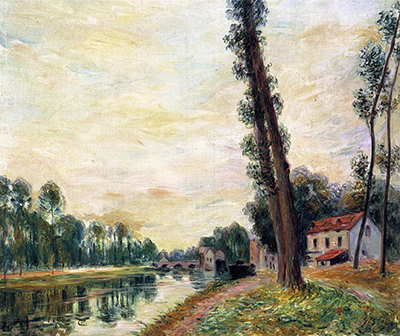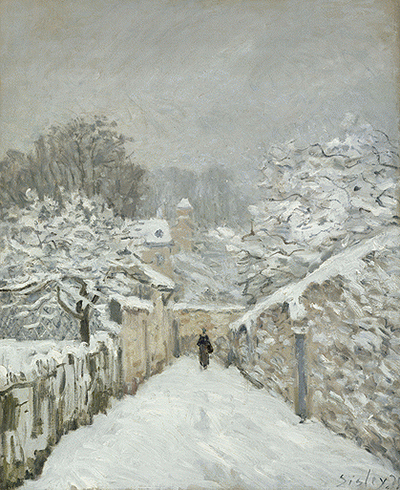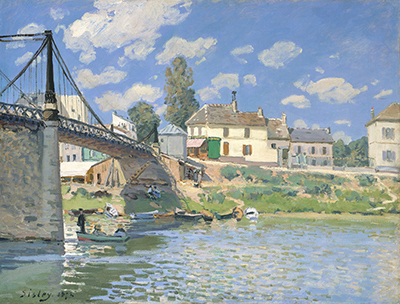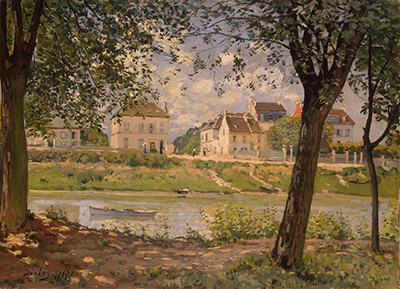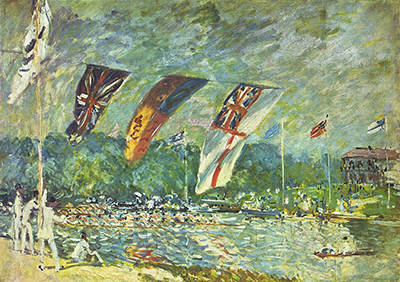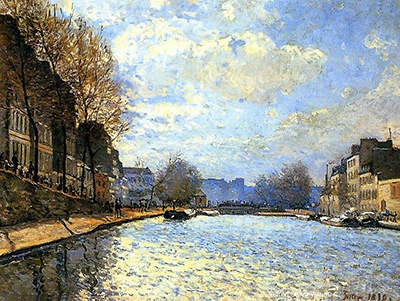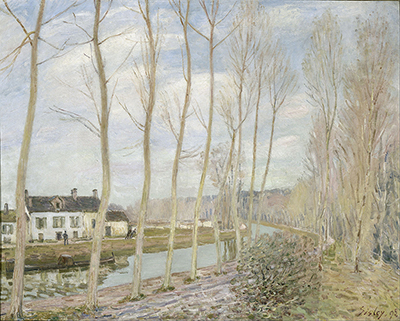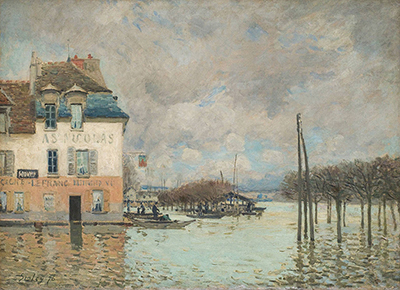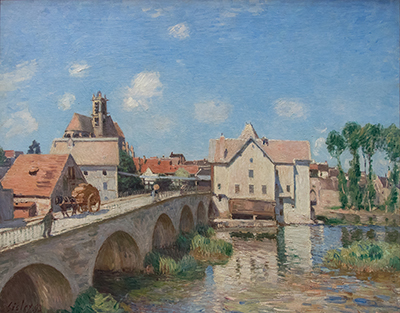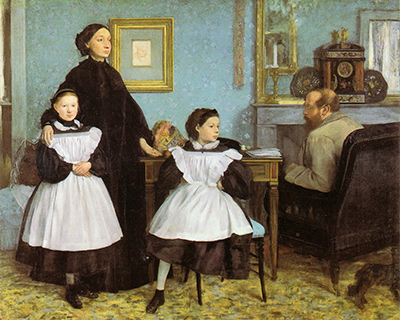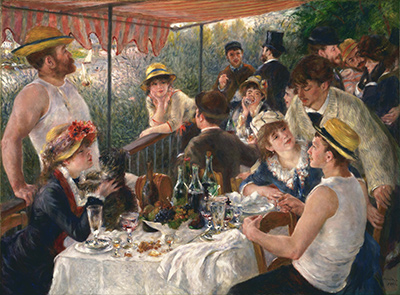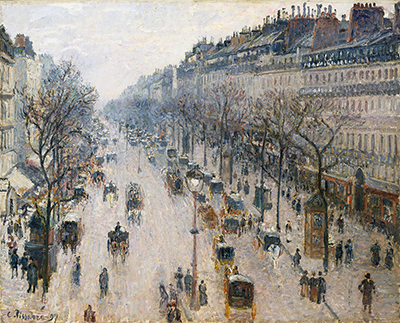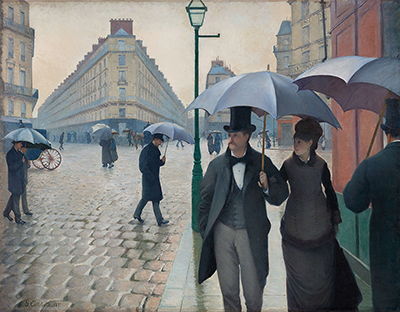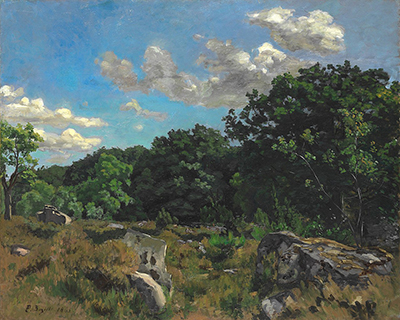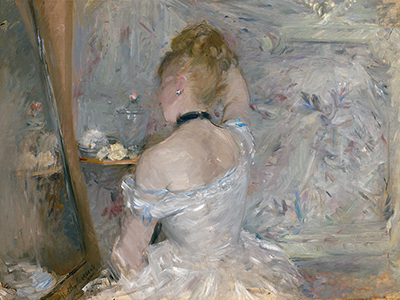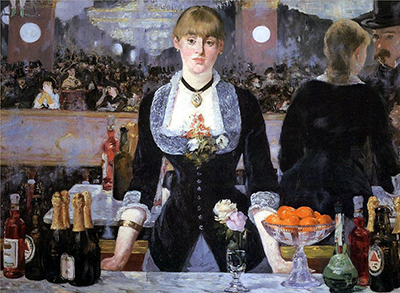The Banks of the Loing by Alfred Sisley is an oil on canvas impressionism landscape which was painted in 1885-87. The paiting's dimensions are 52 by 74cm. The work is in the Philadelpia Museum of Art.
The picture is a typical Sisley, Water and human life, but is a particularly tranquil scene, with the only evidence of humanity being the houses along the banks of the river, whereas many of his water scenes contain people enjoying the water from banks or bridges or sailing. The painting is set in France and is one of many riverscapes painted while Sisley was resident in Paris.
The painting makes wonderful use of light and reflection around the water and trees to add to the tranquil effect. The right foreground introduces a riverside house and boats on its private beach. The house, grey with a red porch roof, has a garden enclosed by a leaning brown picket fence and grey gate, there is a sign outside the gate, although its meaning is unclear. A grass and earth sloping bank runs down to the river with slipways and mooring posts where three or four brown, shallow-bottomed rowing boats are drawn up. The house is shaded by several trees, possibly Alders.
The river flows from the bottom left of the painting towards the low centre, light blue and clear, reflecting the tall trees on the far (left) bank. The far bank of the river has a light green strip of grass and then tall light trees that may be poplars by shape. Further along the bank has been reinforced and there is the vague small shape of a house or hut, with fencing. Further along the right bank are two or three more grey houses surrounded by trees.
The river and picture flow to the low centre of the painting where a grey footbridge with three arches crosses the river and effectively ends the riverscape, there is no definite sign of people even at the footbridge, which is in the distance, and shapes are faded and indistinguishable. Beyond the footbridge, several houses, in the same grey colour as the others, are distinguishable, along with more tall trees, and a there is a glimpse of the river the other side of the bridge. The sky rises up from centre to top of the picture, big and typical Sisley in grey and light blue with partial white clouds.
More Impressionist Artists



